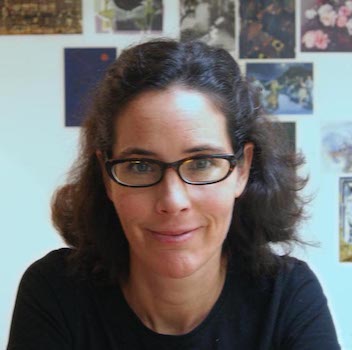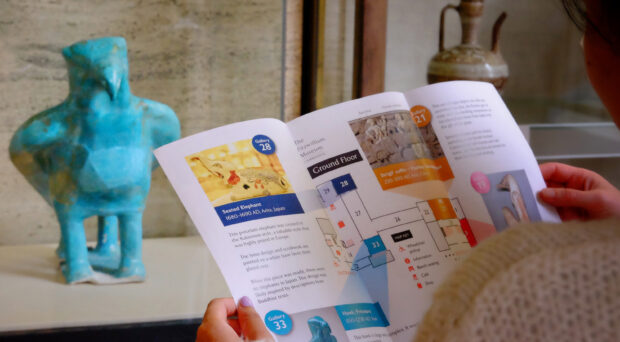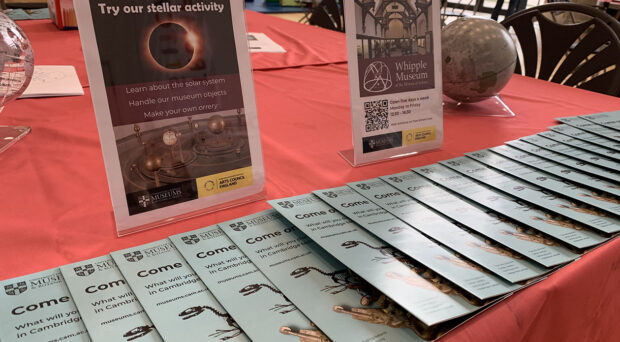The idea of dance within a Museum
When we began the Dance with the Museum programme, one of our core aims was to engage participants with the beauty and inspiration that is the Fitzwilliam. Exquisite architecture, beautifully proportioned rooms, graceful decor – the very experience of being in those rooms was integrated into appreciating the art. Together, Ruth Clarke (Inclusion Associate) and myself had a shared vision, to bring music and movement into the Museum to nourish conversation and connection: between the different art forms, between participants and paintings, between confidence and agency.
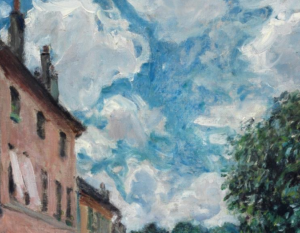
The creative practice
In this programme, to fully appreciate an artwork means you slow down, become comfortable, and open yourself to heightened sense-based awareness. In order to move into the focused attention these paintings merit, you need to allow yourself time to take in the space you are in, the company, your own state of being. Our group participants have become increasingly skilled at appreciating processes of subjective and open-ended engagement. The sessions, both at the Museum and in the community, setting are never didactic lectures – they are rich and experiential, where what lies within oneself is key to unlocking what lies within the painting.
A closed Museum
What happens then, when the museum closes its doors, the team is dispersed, and the groups can no longer meet? It was never going to be enough to direct our participants to a website and invite them to scroll alone through an emptied museum – without the vibrancy of companions, interesting conversation and embodied presence. We were aware in the immediate weeks of lockdown of the strong risk for isolation and loneliness in people. We knew the pandemic was going to change the programme and thought hard about how to continue delivering an offer that maintained vitality and shared engagement.
We quickly established the possibility of continuing to meet fortnightly with our groups via conference phone calls – allowing us to continue looking and sharing together. Printed copies of the paintings were sent out to all participants and to our partner organisations. However, we realised there wasn’t the infrastructure to reach every person in the partner organisations and we wanted to create an offer that could be accessed by anyone at any time.
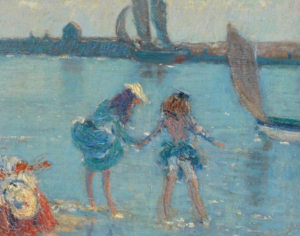
Growing the practice – creating films
We decided to create a series of films looking at some of the favourite paintings. We wanted to stay true to core values: shared looking anchored by building relaxed presence, calm focus, and ample opportunities for self-expression. We particularly wanted people to feel we were still right there with them. Firmly continuing our invitation to enjoy slow and embodied looking, the films begin with a guided relaxation, then take you into looking at the painting and end with a balanced amount of information about the artist and the artwork.
Sidestepping the loss of the ambience of the Museum, we endeavoured to bring the essence of the Fitzwilliam to everyone, wherever they were, just as they were. We wanted to support individuals in their own spaces to enjoy art and through art become present, connected, and creative. We wanted to continue to familiarize people with the spaces and places of the paintings. We emphasised the power of a painting’s qualities and stories to be experienced and felt by the viewer.
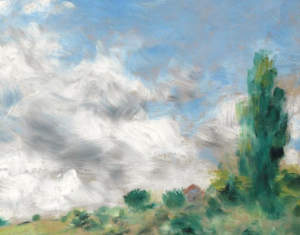
The films were launched on the 1st of May –seven films are available to watch on the University of Cambridge Museums YouTube site. Already Springtime by Monet has been viewed over a thousand times, and A Gust of Wind by Renoir is nearing a similar figure. We began with sending one film weekly to our partner organisations. At the same time, to fully “test” the efficacy and value of the films, we decided to also send them to discerning friends and to other groups we were involved in that might value such an invitation. Never shy of constructive feedback, we invited people to share their experiences with us, and waited to see what they would make of the experience.
Response and feedback
Apart from watching the numbers of film viewings steadily climbing we were delighted by the personal responses shared with us.
We asked: ‘How did watching the film make you feel? What was the experience like?’
We heard:
‘It made me curious, gradually engaged… The middle part of ‘the journey’ was the most delicious as, through the soft narrative you made me ‘own’ the painting by answering all those questions and seeing myself part of it.’
‘I felt as though I was included in the experience of seeing this painting, and I was welcome to engage with its many layers of dialogue. It was accessible and open to me to become part of the narrative that this painting holds, and I could add myself in to the story… creating something new. I was inside the painting itself, and I was walking among the trees on the grass. I could sit down and chat to the characters and join in their conversation’
We heard from the lifestyle coordinator at Bramley Court (residential care home):
‘We are now meeting twice a week to watch the you tube videos so cleverly done …We are working in smaller groups of six. We plan to also book the cinema space out for our nursing community to have the opportunity to view and discuss’ …
‘Today we looked at ‘A Gust of Wind’ by Renoir, lots of discussion about the clouds and how fluid and accomplished they are. We all debated the dark area left of centre, it looked like a bonfire to some of us. Some of us commented on how peaceful it seemed even though it was such a fluid piece of work’ ….
‘Residents are starting to get into the swing of the focus/ relaxation element on the videoand enjoying that too.’
From Birches Day Centre, run by Cambridgeshire County Council:
We heard how the films had helped a host of people, one gentleman who lives alone and has minimal social contact said the films ‘made him smile and just forget the dayand melt into the picture’.
Another gentleman felt he can now access the pictures and relaxation when he needs to – feeling ‘the talking on it was calmingand made a hell of a difference’.
We learned that one of the ladies felt it did make a difference thinking that ‘you had made this for her’. Her husband, although visually impaired, could share the experience with her by listening to the voice. They now listen to the films twice a dayand she can talk about them ‘It has opened up conversations that they have not had in years’.
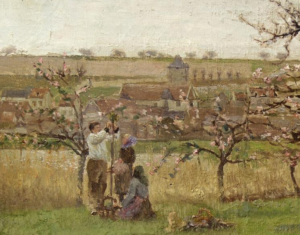
We asked: ‘How did your understanding of the painting change?’
We heard:
‘I loved hearing the art history of the painting and the Impressionists and how they moved outside once their oils were in tubes. It was lovely to hear the relationship of the characters to the painter and that this was his garden too at the end, after my own experiences were allowed full bloom.
My understanding has shiftedbecause I feel like there is a piece of me inside this painting now. As if I have walked in the garden myself…’
And …
‘I am familiar with the painting and have studied Monet. What your experience did was to create a new memory, it stirred imagination and made the painting more personal – in this way it was a genuinely new experience to me.It would enrich everybody’s understanding of how to look at paintings through their own soul and personal experience. ‘
Speaking specifically about Monet’s ‘Springtime’ one viewer wrote ‘Without sounding too grand I would even consider this a masterclass on how to look at paintings (rather than ‘to study’). In essence, you took art and turned it on its head to make it relevant and a wholesome (self) human experience. Light, vibrant and fresh – the way Monet intended!’
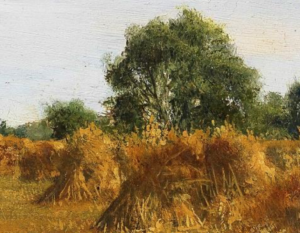
Final thoughts
Some people describe watching the films, some feel they are listening. In every instance, we see that people are describing their experience of the paintings, and how that has affected them. Whichever way, we know that people are enjoying the paintings directly, viscerally and in a relaxed manner that is bringing them pleasure, comfort and inspiration. Whether or not art is familiar or new, the films were able to take the widest range of participants into the personal and import experiences of the paintings. We have always intended for the Fitzwilliam Museum to open like a treasure trove to people, most of whom would not have considered the Museum as a source of inspiration. Through the films, the doors have been thrown open more widely. We are delighted that even in the time of restriction and lockdown, people have been able to absorb and enjoy the richness’s within the Museum.

